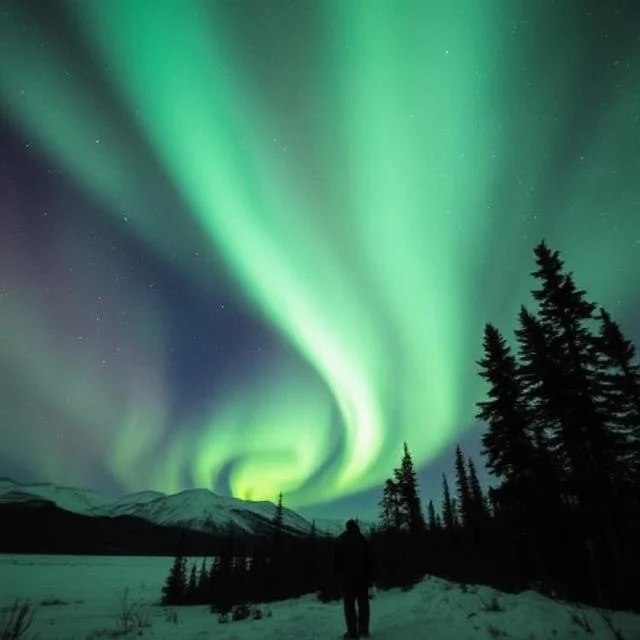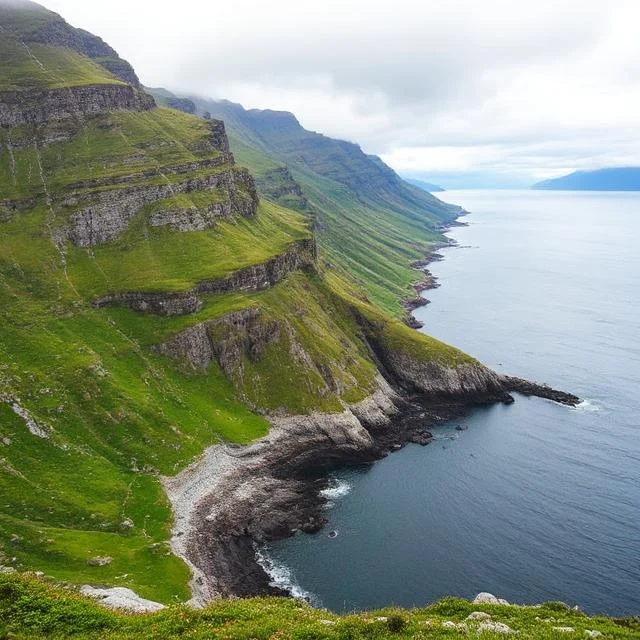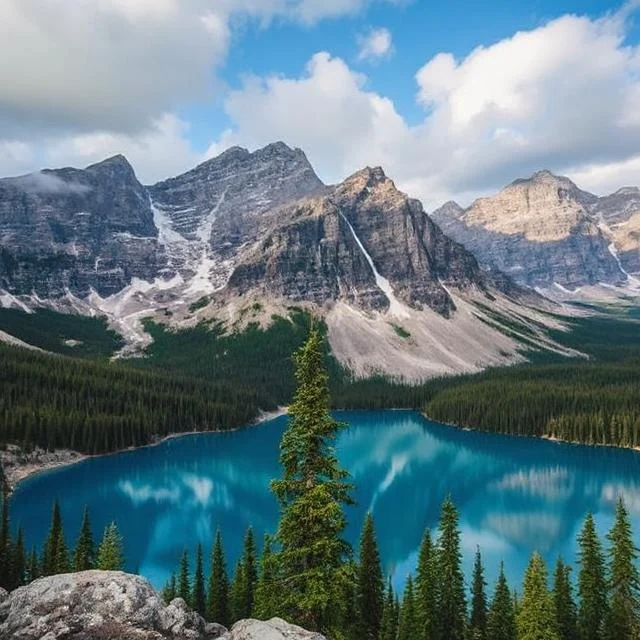Forget crowded city streets – travelers are increasingly answering the call of the wild, and Canada’s vast and breathtaking landscapes are proving irresistible. A surge in nature-based tourism is sweeping the country, driven by a growing desire for authentic experiences, sustainable travel, and a deeper connection with the natural world.
From the towering peaks of the Rockies to the rugged coastlines of Newfoundland, Canada offers an unparalleled array of natural wonders. Travelers are seeking out these destinations, not just for sightseeing, but for immersive adventures that allow them to truly experience the country’s wilderness.
What’s Driving the Trend?
Several factors are contributing to the rise of nature-based tourism in Canada:
- A Desire for Authenticity: In a world increasingly dominated by digital experiences, travelers are yearning for something real. Engaging with nature provides a tangible, sensory experience that can’t be replicated online.
- Growing Environmental Awareness: Concerns about climate change and environmental degradation are pushing travelers towards more sustainable tourism options. Nature-based experiences often emphasize conservation and responsible travel practices.
- The Health and Wellness Connection: Studies increasingly highlight the benefits of spending time in nature, from reducing stress to boosting immunity. Many travelers are seeking out nature-based activities as a way to improve their mental and physical well-being.
- Adventure and Exploration: Canada’s diverse landscapes offer a playground for outdoor enthusiasts. From hiking and kayaking to wildlife watching and backcountry camping, there’s an adventure for every skill level.
Experiences to Explore:
The possibilities for nature-based tourism in Canada are endless. Here are just a few examples:
- Hiking in Banff National Park: Explore stunning mountain trails, witness turquoise lakes, and breathe in the crisp alpine air.
- Whale Watching in British Columbia: Witness majestic orcas, humpback whales, and other marine life in their natural habitat.
- Canoeing in Algonquin Provincial Park: Algonquin Provincial Park. The name itself conjures images of soaring pines, shimmering lakes, and the haunting call of the loon. For nature lovers and adventure seekers, there’s no better way to experience the park’s raw beauty than from the seat of a canoe. Canoeing in Algonquin is more than just a recreational activity; it’s an immersion into the heart of the Canadian wilderness, a chance to connect with nature on a profound level.

Why Choose Algonquin for Your Canoeing Adventure?
- Algonquin is a paddler’s paradise, boasting over 2,400 lakes and 1,200 kilometers of canoe routes. This vast network offers something for everyone, from novice paddlers seeking a leisurely day trip to seasoned adventurers embarking on multi-day expeditions.
- Here’s what makes Algonquin a must-visit destination for canoeing:
- Unparalleled Scenery: Imagine gliding across glassy waters, surrounded by towering forests that paint the landscape in hues of green and gold. Algonquin’s beauty is breathtaking, offering a constantly changing panorama of natural wonders.
- Diverse Wildlife: Keep your eyes peeled for moose grazing along the shore, beavers building their dams, otters playfully swimming, and a myriad of bird species soaring overhead. Algonquin is a haven for wildlife, offering incredible opportunities for wildlife viewing.
- Pristine Wilderness: Venture beyond the easily accessible lakes and rivers, and you’ll find yourself in a world untouched by modern development. Algonquin’s interior is a refuge for those seeking solitude and a connection with nature.
- Well-Maintained Infrastructure: The park boasts well-maintained portages, clearly marked canoe routes, and designated campsites, making trip planning and navigation relatively straightforward.
- A Variety of Route Options: Whether you’re looking for a relaxing day trip or a challenging multi-day wilderness adventure, Algonquin has a route to suit your abilities and preferences.
Planning Your Algonquin Canoeing Trip:
- Proper planning is essential for a safe and enjoyable canoeing experience in Algonquin. Here’s a breakdown of key considerations:
- Choosing Your Route: Research the various canoe routes and select one that matches your skill level and desired trip length. Consider factors like portage lengths, lake size, and remoteness. Algonquin’s website and park maps are invaluable resources.
- Booking Permits and Campsites: Reservations are mandatory for both day use and overnight camping. Book your permits and campsites well in advance, especially during peak season (summer).
- Packing the Essentials: Be prepared for all types of weather. Pack appropriate clothing, rain gear, a first-aid kit, navigation tools (map, compass, GPS), food, water, a water filter or purification tablets, and camping gear. Don’t forget insect repellent!
- Safety First: Always wear your personal flotation device (PFD) while on the water. Be aware of weather conditions and potential hazards. Inform someone of your itinerary and expected return date.
Popular Canoe Routes to Consider:
- The Barron Canyon Route: A relatively short and easy route, perfect for beginners, offering stunning views of the Barron Canyon.
- The Smoke Lake to Ragged Lake Loop: A moderate route with beautiful lakes, scenic portages, and opportunities for wildlife viewing.
- The Petawawa River Trip: A more challenging multi-day trip down the iconic Petawawa River, suitable for experienced paddlers.
- The Brent Crater Route: Explore the unique geological feature of the Brent Crater, a fascinating area with diverse flora and fauna.
Tips for a Memorable Canoeing Experience:
- Learn Basic Paddling Techniques: Familiarize yourself with basic canoeing strokes and techniques to make your paddling more efficient and enjoyable.
- Practice Portage Skills: Portaging, carrying your canoe and gear over land, is an integral part of canoeing in Algonquin. Practice lifting and carrying your canoe before your trip.
- Leave No Trace: Practice Leave No Trace principles to minimize your impact on the environment. Pack out all your trash, stay on designated campsites, and avoid disturbing wildlife.
- Embrace the Silence: Turn off your phone, disconnect from the digital world, and immerse yourself in the tranquility of the wilderness. Listen to the sounds of nature, and appreciate the peace and quiet.
- Respect Wildlife: Observe wildlife from a distance, and avoid feeding or approaching animals.
- Canoeing in Algonquin Provincial Park is an unforgettable adventure. It’s a chance to escape the hustle and bustle of modern life, reconnect with nature, and create lasting memories in one of Canada’s most beautiful wilderness areas. So, grab your paddle, pack your gear, and get ready to experience the magic of Algonquin from the seat of a canoe!

- Aurora Borealis Viewing in the Yukon: The Yukon, Canada’s wild western territory, is a land of towering mountains, pristine lakes, and vast boreal forests. But beyond its stunning landscapes, it holds another magical allure: the aurora borealis, also known as the Northern Lights. For those seeking an unforgettable experience, witnessing this celestial dance in the Yukon is a journey worth taking.
Why the Yukon for Aurora Viewing?
Several factors make the Yukon a prime location for chasing the Northern Lights:
- Northern Latitude: Situated within the auroral oval, the Yukon experiences frequent and intense aurora displays. Its location provides a high probability of seeing the lights on clear nights.
- Low Light Pollution: Away from major urban centers, the vast wilderness of the Yukon offers incredibly dark skies. This lack of light pollution allows for a more vivid and unobstructed view of the aurora.
- Accessibility: While remote, the Yukon is relatively accessible via the Alaska Highway and has well-maintained infrastructure.
When to Go:
The best time to witness the aurora in the Yukon is during the winter months, generally from late September to mid-April. During this period, the nights are long and dark, maximizing your chances of seeing the lights. Keep in mind that aurora activity is unpredictable, so it’s best to plan for a few nights to increase your odds.
Where to Watch:
While the aurora can be seen from almost anywhere in the Yukon with a clear northern horizon, some locations are particularly popular and offer enhanced viewing experiences:
- Whitehorse: As the capital city, Whitehorse provides a convenient base with various tour operators and accommodation options. While light pollution is slightly higher than in more remote areas, the aurora can still be visible, especially during strong displays.
- Outside of Whitehorse: Venturing just outside the city limits significantly reduces light pollution. Popular spots include Fish Lake, Chadburn Lake, and the Alaska Highway between Whitehorse and Haines Junction.
- The Dempster Highway: This iconic highway stretches north into the Arctic Circle and offers exceptional aurora viewing opportunities. The vast landscapes and minimal light pollution create an awe-inspiring backdrop for the lights.
- Smaller Communities: Towns like Dawson City and Haines Junction provide a more intimate and authentic Yukon experience, with dark skies and stunning scenery.
Planning Your Trip:
- Book Accommodation and Tours in Advance: The Yukon is a popular destination for aurora viewing, so it’s best to book accommodation and tours well in advance, especially during peak season.
- Check the Aurora Forecast: Several websites and apps provide aurora forecasts, which can help you plan your viewing nights. However, keep in mind that these forecasts are not always accurate.
- Dress Warmly: Winter in the Yukon can be extremely cold, with temperatures often dropping below -30°C (-22°F). Dress in layers and wear warm, insulated clothing, including a hat, gloves, scarf, and boots.
- Bring a Camera: If you want to capture the aurora’s beauty, bring a camera with manual settings and a tripod. Experiment with different settings to find the best results.
- Be Patient: Aurora viewing requires patience. The lights may not appear immediately, and they can change in intensity and shape. Be prepared to wait and enjoy the experience.
Beyond the Aurora:
While chasing the Northern Lights is the main attraction, the Yukon offers a wealth of other winter activities:
- Dog Sledding: Experience the thrill of mushing through the snow-covered wilderness behind a team of huskies.
- Snowmobiling: Explore the vast backcountry on a snowmobile and discover hidden gems.
- Ice Fishing: Try your luck at catching fish through a hole in the ice.
- Hot Springs: Relax and soak in natural hot springs under the starry sky.
Viewing the aurora borealis in the Yukon is an experience that will stay with you forever. It’s a chance to witness the magic of nature, connect with the vast wilderness, and create memories that will last a lifetime. So, pack your bags, prepare for an adventure, and get ready to chase the Northern Lights in the Yukon.

- Exploring Gros Morne National Park in Newfoundland: Gros Morne National Park, a UNESCO World Heritage site nestled on the west coast of Newfoundland, Canada, is a landscape sculpted by time, offering a dramatic tapestry of geological marvels, breathtaking fjords, and vibrant coastal communities. More than just a pretty postcard picture, Gros Morne is a living textbook, revealing the earth’s secrets in its exposed mantle rock, towering cliffs, and lush green forests. A visit here is an immersive experience, a journey through millions of years of geological history paired with the raw beauty of the Canadian wilderness.
A Geologist’s Playground:
Gros Morne’s claim to fame lies in its exceptional geological significance. It’s one of the few places in the world where you can walk on the earth’s mantle, the deep layer usually hidden beneath the crust. The iconic Tablelands, a barren, rust-colored expanse, is composed of this exposed mantle rock, offering a stark contrast to the surrounding verdant landscape. This unique terrain, devoid of the nutrients necessary for plant growth, is a testament to the forces that shaped our planet. Understanding the processes of plate tectonics and continental drift comes alive as you explore this geological wonder. Park interpreters offer fascinating insights into the formation of the Tablelands and the significance of their discovery in understanding earth’s evolution.
Fjord Adventures and Coastal Charms:
Beyond the geological oddities, Gros Morne boasts stunning fjords carved by glaciers over millennia. Take a boat tour through Western Brook Pond, a freshwater fjord carved by glaciers during the last ice age. Surrounded by towering cliffs that rise hundreds of meters above the water, the silence broken only by the calls of seabirds and the gentle lapping of waves against the shore, the experience is truly awe-inspiring. Keep an eye out for waterfalls cascading down the cliffs, adding to the dramatic scenery.
The park also encompasses charming coastal communities, each with its own unique character and connection to the sea. From traditional fishing villages like Rocky Harbour and Norris Point to the historic town of Woody Point, the park offers a glimpse into the rich cultural heritage of Newfoundland. Engage with the locals, sample fresh seafood, and learn about the traditions that have sustained these communities for generations.
Hiking and Exploring the Park’s Diversity:
Gros Morne’s diverse landscape provides a plethora of hiking opportunities for all skill levels. From easy strolls along coastal boardwalks to challenging climbs up mountain peaks, there’s a trail to suit every adventurer.
- The Gros Morne Mountain Trail: This strenuous hike rewards climbers with panoramic views of the park. Be prepared for a challenging ascent and unpredictable weather.
- The Tablelands Trail: A relatively easy hike that allows you to explore the unique landscape of the exposed mantle rock.
- The Green Gardens Trail: This trail offers access to coastal scenery, sea stacks, and a vibrant green oasis amidst the rugged landscape.
Wildlife Encounters:
Gros Morne is home to a diverse array of wildlife, including moose, caribou, arctic foxes, and a variety of bird species. Keep your eyes peeled while hiking and driving, and remember to observe wildlife from a safe distance. Birdwatchers will be particularly delighted by the diverse avian population, including puffins, gannets, and bald eagles.
Planning Your Visit:
- Best Time to Visit: The peak season is during the summer months (June-August), when the weather is mildest and all facilities are open. However, spring and fall offer their own unique appeal with fewer crowds and stunning fall foliage.
- Accommodation: A range of accommodation options are available, from campgrounds and cabins to hotels and bed and breakfasts. Book in advance, especially during peak season.
- Transportation: Renting a car is highly recommended to explore the park at your own pace.
- Essentials: Pack for all types of weather, including rain gear, warm layers, and sturdy hiking shoes. Don’t forget sunscreen, insect repellent, and a camera to capture the breathtaking scenery.
Gros Morne National Park is more than just a destination; it’s an experience that will stay with you long after you leave. It’s a reminder of the power of nature, the vastness of geological time, and the enduring beauty of the Canadian wilderness. So, pack your bags, lace up your boots, and prepare to be amazed by the ancient wonders that await you in Gros Morne.
Responsible Tourism is Key:
As nature-based tourism grows, it’s crucial to prioritize responsible and sustainable practices. This includes:
- Protecting Natural Habitats: Minimizing our impact on the environment by staying on marked trails, avoiding disturbance of wildlife, and properly disposing of waste.
- Supporting Local Communities: Patronizing local businesses, respecting local customs, and contributing to the economic well-being of the communities surrounding natural attractions.
- Educating Ourselves: Learning about the ecology and cultural history of the areas we visit to better understand and appreciate their value.
Looking Ahead:
The trend towards nature-based tourism is likely to continue, as travelers increasingly seek out authentic, sustainable, and enriching experiences. Canada, with its vast wilderness and commitment to conservation, is perfectly positioned to meet this growing demand. By embracing responsible tourism practices and celebrating the country’s natural beauty, we can ensure that future generations have the opportunity to experience the magic of Canada’s wild side.
So, pack your hiking boots, grab your binoculars, and prepare to be amazed by the natural wonders that await you in Canada!


